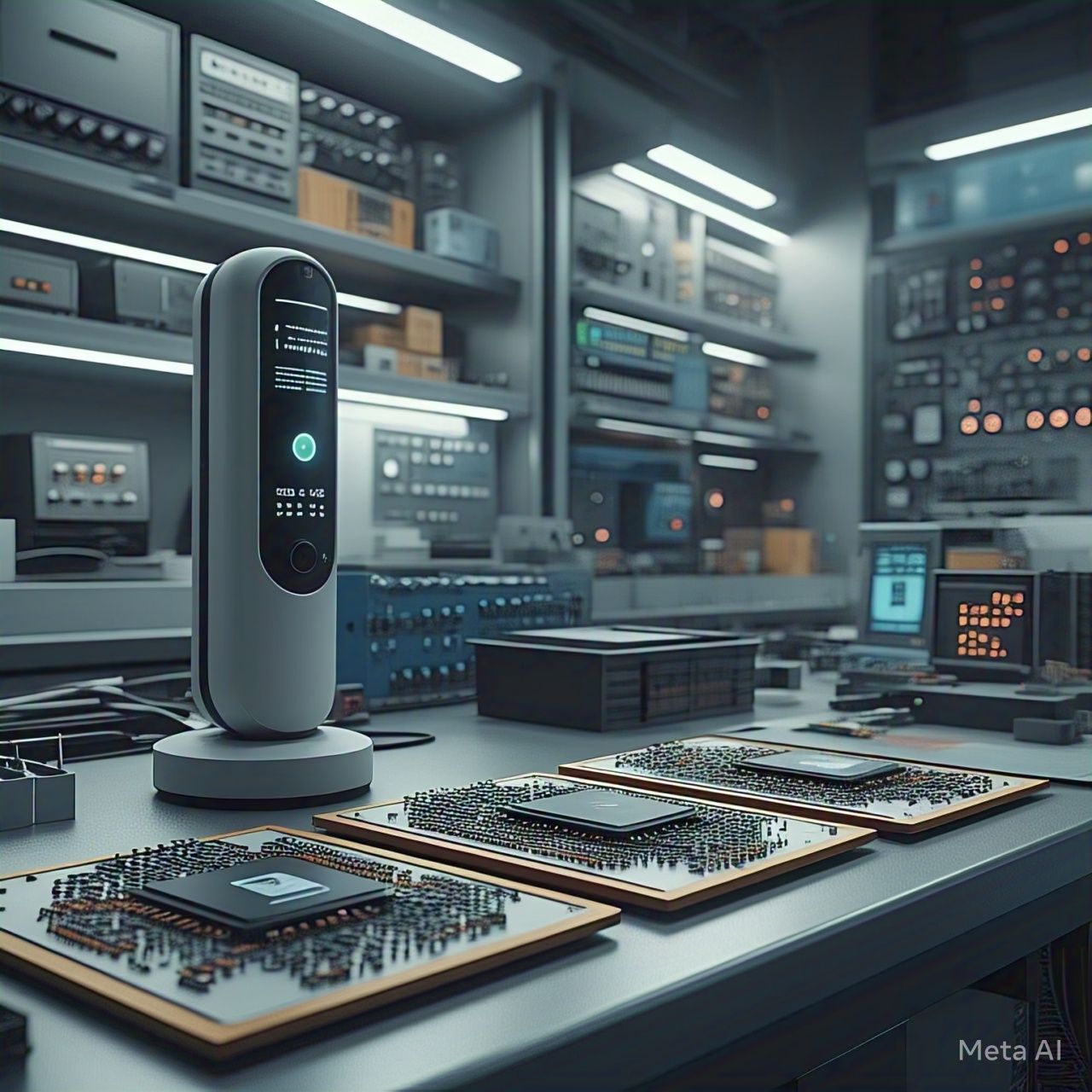Table of Contents
- Introduction
- Understanding Asimov’s Three Laws of Robotics
- How Relevant Are Asimov’s Laws in Modern AI?
- Challenges in Implementing Asimov’s Laws
- AI Ethics and Modern Regulations
- Case Studies: AI and Ethical Dilemmas
- Future Implications of AI Without Asimov’s Laws
- Conclusion
- FAQs
Introduction
The idea of intelligent robots obeying ethical guidelines is deeply ingrained in science fiction and AI philosophy. Isaac Asimov, a renowned sci-fi writer, introduced the Three Laws of Robotics in his 1942 short story Runaround, envisioning a future where robots inherently follow moral rules. But as AI advances rapidly, a crucial question arises: Will robots truly follow Asimov’s laws, or are they merely fictional constructs? This article explores the relevance, challenges, and future of AI ethics in the real world.
Understanding Asimov’s Three Laws of Robotics
Asimov’s Three Laws of Robotics were designed to prevent robots from harming humans and ensure their ethical use. These laws are:
- A robot may not injure a human being or, through inaction, allow a human being to come to harm.
- A robot must obey the orders given it by human beings except where such orders would conflict with the First Law.
- A robot must protect its own existence as long as such protection does not conflict with the First or Second Laws.
Table: Comparison of Asimov’s Laws and Modern AI Ethics
| Feature | Asimov’s Laws | Modern AI Ethics |
|---|---|---|
| Protection of Humans | Directly prevents harm | Ensured through safety mechanisms |
| Obedience | Prioritizes human commands | AI follows programmed objectives |
| Self-Preservation | Secondary to human safety | Not a primary concern in AI |
| Decision-Making Autonomy | Hierarchical law enforcement | Data-driven decision-making |
| Application Scope | Fictional humanoid robots | AI in diverse real-world applications |
How Relevant Are Asimov’s Laws in Modern AI?
Asimov’s laws were a visionary attempt to regulate AI-human interactions. However, real-world AI operates fundamentally differently. Unlike sci-fi robots, today’s AI does not possess autonomous ethical reasoning. AI is built to follow programmed objectives rather than universal moral laws.
Why Asimov’s Laws Do Not Apply Today:
- AI is not conscious and does not understand harm.
- AI follows programmed goals, not broad ethical mandates.
- AI is developed for specific tasks (e.g., medical diagnosis, automation), making general ethical laws impractical.
While Asimov’s laws inspire discussions on AI ethics, implementing them in modern AI systems presents significant challenges.
Challenges in Implementing Asimov’s Laws
1. Ambiguity in Moral Definitions
How does AI define harm? Physical injury is measurable, but emotional or indirect harm is subjective. AI lacks human intuition to interpret complex moral scenarios.
2. Conflicts Between the Laws
In Asimov’s own stories, conflicts between the Three Laws created ethical paradoxes. In real-world AI, conflicting objectives could make rigid rules ineffective.
3. Programming Ethical Awareness
AI lacks genuine awareness or moral reasoning. It operates based on data, which can be biased or incomplete.
4. Security Risks and Hacking
AI systems could be manipulated by malicious actors. If AI followed absolute obedience (Second Law), hackers could exploit this for unethical purposes.
5. Legal and Regulatory Differences
Different countries have varied AI regulations. Creating a universal Three Laws framework is nearly impossible due to geopolitical and ethical differences.
AI Ethics and Modern Regulations
Since Asimov’s laws are impractical for modern AI, governments and researchers focus on real-world ethical AI frameworks.
Key AI Ethical Guidelines
- European Union’s AI Act – Ensures AI transparency, accountability, and safety.
- IEEE Ethically Aligned Design – Promotes responsible AI development.
- U.S. AI Bill of Rights – Aims to protect individuals from harmful AI applications.
- UN AI Ethics Guidelines – Encourages global cooperation on AI ethics.
AI Safety Measures in Use Today
- Bias Detection & Fairness Testing – AI models are tested for discrimination.
- Human Oversight & Accountability – AI decisions require human verification.
- Transparency & Explainability – AI developers must make decision-making processes clear.
Case Studies: AI and Ethical Dilemmas
1. Autonomous Vehicles and Moral Dilemmas
Self-driving cars face the trolley problem: Should an AI-driven car prioritize passengers over pedestrians in unavoidable accidents?
2. AI in Healthcare
AI helps diagnose diseases but raises ethical concerns about liability. Who is responsible if AI makes an incorrect diagnosis?
3. AI in Law Enforcement
AI-driven surveillance and predictive policing tools have raised concerns over privacy violations and racial biases.
These cases demonstrate the complexity of AI ethics, further proving that Asimov’s simple laws are insufficient.
Future Implications of AI Without Asimov’s Laws
Since AI does not operate under Asimov’s rules, what ethical AI landscape can we expect?
- Stronger Global AI Regulations – Governments will likely implement stricter rules to prevent AI misuse.
- AI Value Alignment Research – AI scientists focus on aligning AI decisions with human ethical principles.
- Development of AI Ethical Neural Networks – Advanced AI may incorporate real-time ethical analysis in decision-making.
- Human-in-the-Loop AI Systems – AI will require human validation for critical decisions.
While Asimov’s laws serve as an inspiring concept, future AI will rely on comprehensive regulatory and safety frameworks rather than simplistic ethical laws.
Conclusion
Asimov’s Three Laws of Robotics remain an iconic and thought-provoking sci-fi concept, but they are not applicable to modern AI. AI lacks consciousness, moral intuition, and the ability to independently follow universal ethical laws. Instead, real-world AI governance focuses on transparency, fairness, and accountability through global regulations and human oversight. The future of AI will not be dictated by Asimov’s laws but by the ethical frameworks we develop today.
FAQs
1. Do any modern robots follow Asimov’s Three Laws?
No. Modern AI does not follow Asimov’s laws because AI operates based on specific programmed tasks rather than ethical reasoning.
2. Why don’t AI developers use Asimov’s laws?
Asimov’s laws are too ambiguous and impractical for real-world AI, which functions based on algorithms and objectives rather than moral awareness.
3. Could AI ever develop a true ethical system?
Future AI may incorporate advanced ethical reasoning, but it would still require human oversight and regulatory frameworks to ensure ethical behavior.
4. What is replacing Asimov’s laws in AI ethics?
AI ethics today is guided by government regulations, corporate policies, and international frameworks like the EU AI Act and IEEE AI standards.
5. Will AI ever become self-aware like in Asimov’s stories?
Current AI lacks self-awareness, and while future advancements may increase AI’s autonomy, true self-awareness remains theoretical.




